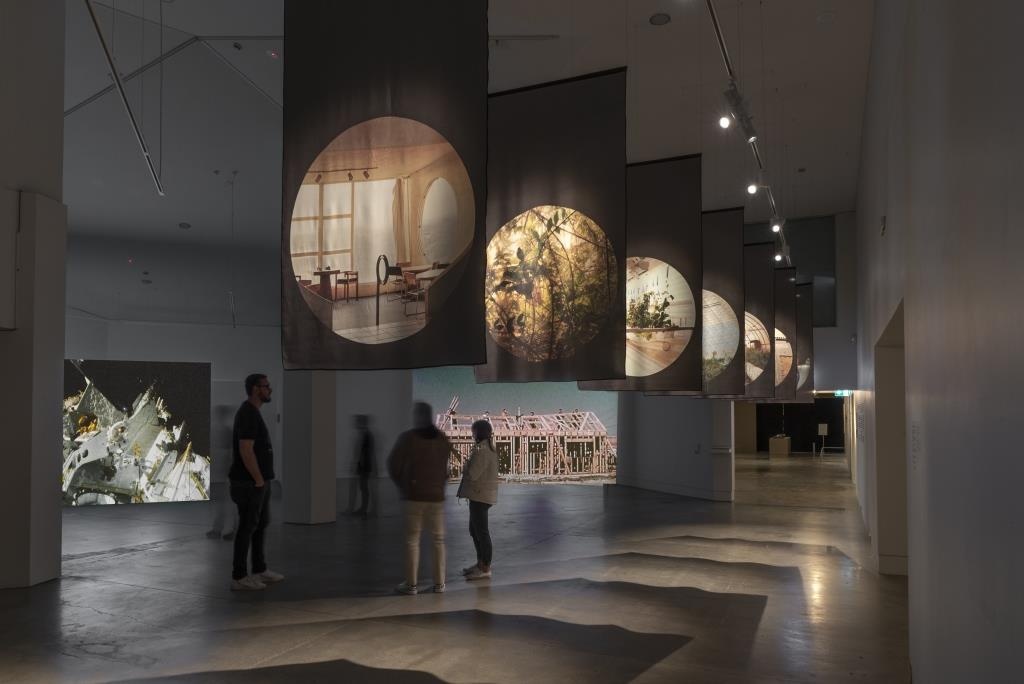

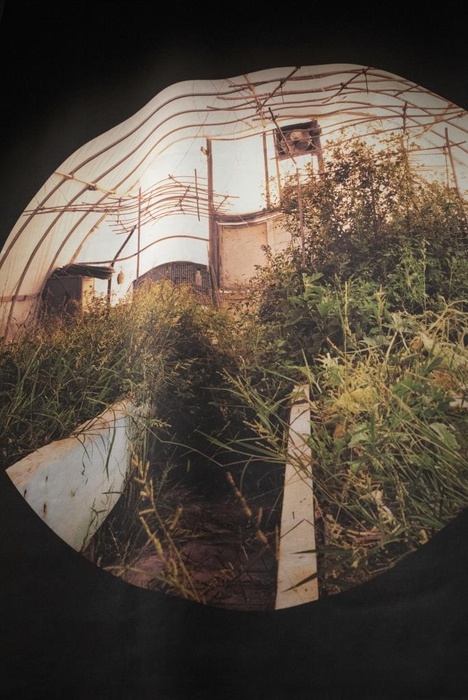


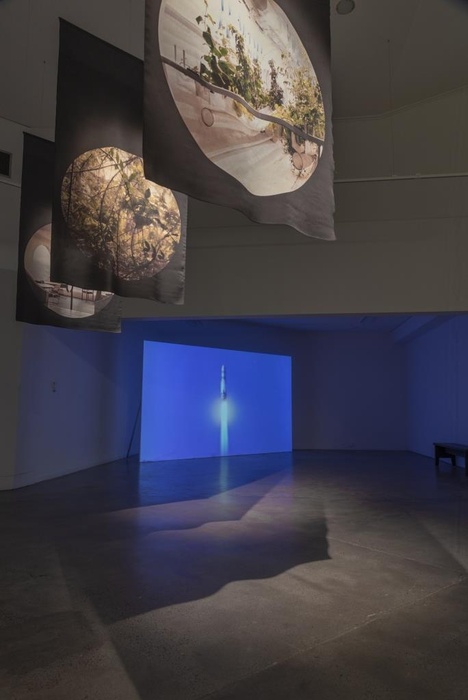

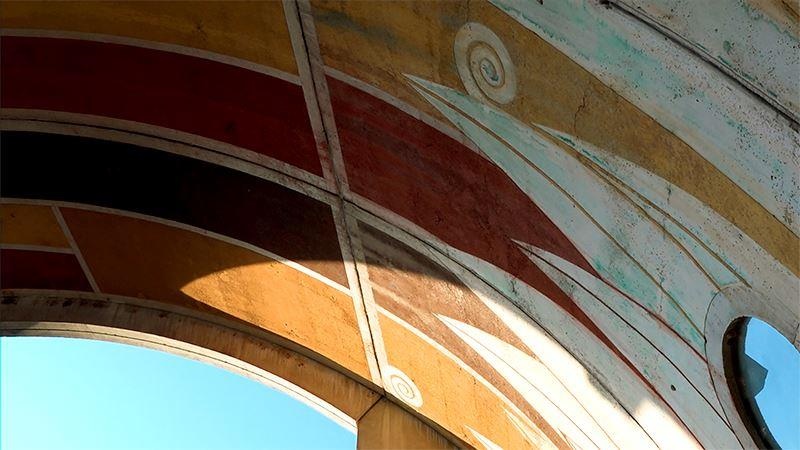
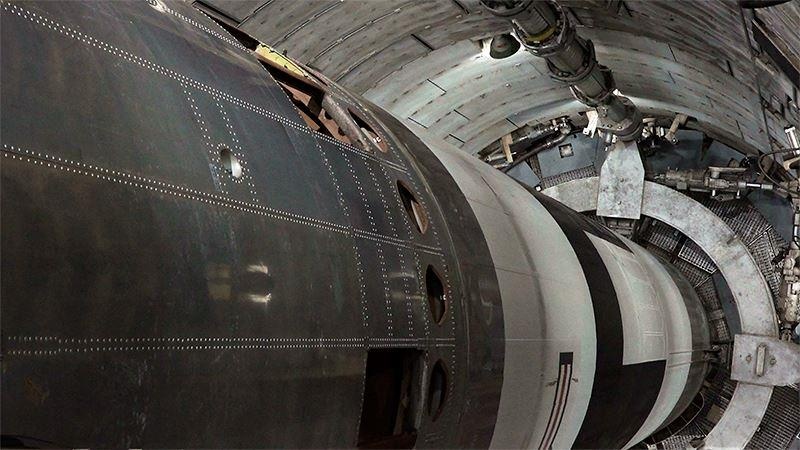

Fiona Amundsen & Tim Corballis, production stills from Human Hand, 2019-2020. Courtesy of the artists
With Ingrid Horrocks, Sue Kirsch, Joanna Macy, and Yvonne Morris.
From a 1970s experimental micro-city, to a structure meant to replicate human life in outer space, and the home of the largest intercontinental ballistic missile deployed by the US Air Force: Human Hand by Fiona Amundsen and Tim Corballis takes us on a journey through video and photography to three historically-laden sites in Arizona, USA.
As part of Fiona Amundsen’s tenure of Fulbright Scholar Award in 2019, Amundsen and Corballis spent time at all three sites – the micro-city Arcosanti, talking with people who had resided there since its heyday; Biosphere 2, a closed structure built to model global systems and demonstrate the viability of supporting human life in outer space; and the Titan Missile Museum, home of a Titan II Missile.
Human Hand brings these divergent images and perspectives together, showing a range of views, from the alternative lifestyle of Arcosanti, to the woman who was in charge of turning the key to detonate the missile during the Cold War.
Amundsen also met with deep ecology theorist, Buddhist and environmental activist Joanna Macy, whose thinking is integral to this new work. The exhibition title, Human Hand, is taken from a passage within Macy’s book Coming Back to Life in which she articulates how feelings of despair and anguish can be used to confront the harsh realities of our deepening global crises, such as climate change, species extinction and the ongoing threat of nuclear disaster.
The exhibition seeks out ways of living in a sprawling, urbanised and militarised world. At the three sites Amundsen and Corballis respond to, people have coped differently with the consequences of military capitalism—hoping either to build alternatives, to escape, or to live right at the heart of it.
The artworks ask how lens-based imagery may give agency to the nuanced reality of social lives in the wake of military histories. Amundsen and Corballis are interested in how such imagery can advocate for the human-to-human care that our present moment is so desperately in need of, sharing and promoting a sacred responsibility for life and living.
LISTEN: Kim Hill chats to Fiona and Tim about Human Hand on RNZ Saturday Morning, 20 June 2020
READ: Fiona & Tim's essay about their experiences and influences in making Human Hand
Fiona Amundsen
Fiona Amundsen’s practice explores how documentary photographic and filmic images can enable a connected, active and caring relationship to the ramifications of painful historical experiences that live on in the present.
She is interested in establishing relationships between specific historical events, the social responsibility of witnessing, and the ethics of documentary photographic and filmic practices. She edits declassified military and government produced archival imagery with her own present-day photography and filming to investigate the potential for imagery to perform a kind of visual listening and documentary witnessing of acts of colonial imperial violence, be it historical or not. Her images enable an ethical caring based in relationships of imagining over reified visibility, and listening over cognitive knowing.
Her current project, Coming Back to Life (2019 -), explores relationships between military nuclear technologies, military-capitalism, nuclear environmental destruction and spirituality. Prior to this new series, for the last five years Fiona explored alternative modalities for memorialising stories and experiences associated with the Asia-Pacific War (WWII). Her recent projects have focused on the 82-day Battle of Okinawa (It Was a Cave Like This/Violent Wind of Steel, 2014-18) 1944 ‘Cowra Breakout’ in Australia, where just over 1,000 Japanese POWs attempted to escape, resulting in 235 deaths (A Body that Lives, 2017); the March 1945 American aerial fire-bombing of Tokyo (To Each Other/A Body that Lives, 2015-16); the plight of Ben Kuroki, the only American of Japanese descent permitted to fight in aerial combat in the Asia Pacific Theatre of WWII (Way of Life, 2016).
Tim Corballis
Tim Corballis’s writing deals with how political experience can be reflected in the composition of literary text. He is based in Wellington, where he works as a lecturer at the Centre for Science in Society at Victoria University of Wellington. He has published five novels as well as a substantial corpus of essays and art writing. He has received major awards and prizes for his writing, with his essay ‘Winter’ winning the Landfall Essay Competition in 2013. Corballis has been the recipient for a variety of residencies, including the 2003 Randell Cottage Writers Trust Residency, the 2005 Creative New Zealand Berlin Writer’s Residency and the 2015 Victoria University of Wellington Creative New Zealand Writer in Residence. He has turned to speculative fiction with his latest novel Our Future is in the Air (Victoria University Press, 2017).
Corballis and Amundsen have been collaborating since 2004, most recently on Machine Wind (2015) based on a visit by Amundsen to the remnants of Syonan Jinja, a Japanese Shinto shrine built during WWII by Australian and British POWs in Singapore.